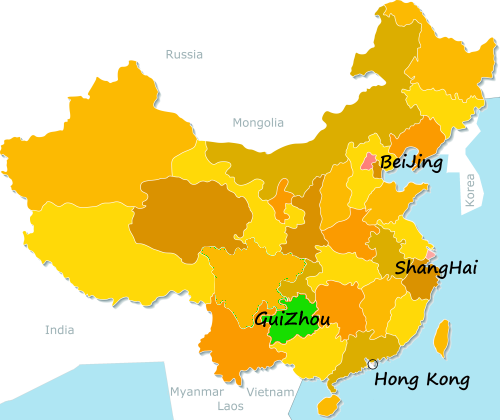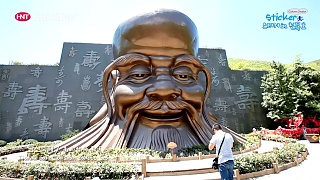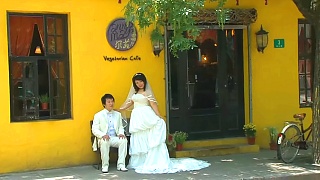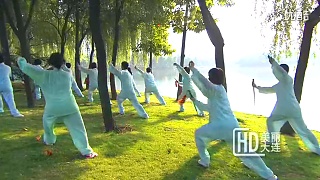With Wild Girl 野小妹 ...
[640],shadow=true,start=,stop=Bonus films - on mulberries ...
On tomatoes ...
[320],shadow=true,start=,stop=On citrus fruits (mandarins) ...
[320],shadow=true,start=,stop=On loquat ...
[320],shadow=true,start=,stop=Chinese cuisine is an intricate tapestry of flavors, techniques, and regional specialties that has evolved over thousands of years. From the fiery spices of Sichuan to the delicate dim sum of Cantonese cuisine, every region of China offers its own culinary delights. For visitors to China, exploring the diverse and dynamic world of Chinese food is an essential part of experiencing the country's rich cultural heritage. Here's a more extensive exploration of Chinese cuisine for visitors:
Regional Diversity:
Sichuan Cuisine: Hailing from the southwestern province of Sichuan, this cuisine is famed for its bold, spicy, and numbing flavors. Sichuan peppercorns, chili peppers, and aromatic spices are used liberally in dishes like Mapo Tofu, Dan Dan Noodles, and Sichuan Hot Pot, creating a symphony of flavors that tingles the taste buds.
Cantonese Cuisine: With its emphasis on fresh ingredients and delicate flavors, Cantonese cuisine is highly regarded for its seafood dishes, roasted meats, and dim sum. Steamed fish, Char Siu (barbecue pork), and Har Gow (shrimp dumplings) are just a few examples of the exquisite dishes that showcase Cantonese culinary mastery.
Shanghai Cuisine: Reflecting its coastal location and cosmopolitan history, Shanghai cuisine combines influences from Jiangsu, Zhejiang, and Anhui provinces. Sweet and Sour Mandarin Fish, Shanghai Soup Dumplings (Xiaolongbao), and Drunken Chicken are some of the signature dishes that highlight the diverse flavors and textures of this culinary tradition.
Beijing Cuisine: As the capital of China, Beijing boasts a rich culinary heritage deeply rooted in imperial traditions. Peking Duck, a dish with crispy skin and succulent meat served with pancakes and hoisin sauce, is a quintessential Beijing delicacy. Other notable dishes include Zhajiangmian (Beijing Noodles), Mongolian Hot Pot, and Beijing-style meat pies.
Hunan Cuisine: Known for its bold and aromatic flavors, Hunan cuisine features dishes that are spicy, sour, and intensely flavorful. Chairman Mao's Red-Braised Pork, Dong'an Chicken, and Steamed Fish Head with Chopped Chili exemplify the fiery and robust nature of Hunanese cooking, which makes ample use of chili peppers, garlic, and fermented ingredients.
Street Food and Snacks:
Jianbing: This savory Chinese crepe is a popular breakfast option, consisting of a thin pancake filled with eggs, scallions, cilantro, and various fillings such as crispy fried dough, pickled vegetables, or chili sauce.
Baozi: These steamed buns are filled with a variety of savory or sweet fillings, including pork, vegetables, or red bean paste. Baozi are a popular street food snack and can be found in teahouses, markets, and street stalls across China.
Roujiamo: Often referred to as Chinese Hamburgers, roujiamo features savory braised meat stuffed inside a flatbread, offering a hearty and flavorful snack that's perfect for on-the-go eating.
Dining Etiquette and Customs:
Family-Style Dining: Chinese meals are typically served family-style, with multiple dishes shared among diners seated around a table. It's customary to use chopsticks to pick up food from communal dishes and to serve elders before oneself.
Toasting and Ganbei: When dining with Chinese hosts, expect toasts (ganbei) with alcohol, usually baijiu (Chinese liquor). It's polite to reciprocate the toast and drink in moderation, but declining politely is acceptable if you don't drink alcohol.
Tea Culture: Tea is an integral part of Chinese dining culture, with a wide variety of teas available to complement different dishes. Green tea, oolong tea, and pu'er tea are among the most popular choices, and serving tea to guests is a sign of hospitality and respect.
Street Markets and Night Markets:
Wangfujing Snack Street, Beijing: Located near the Forbidden City, this bustling street market offers a wide variety of traditional snacks, street food, and local delicacies. Visitors can sample everything from scorpions on a stick to traditional Beijing snacks like Jianbing and Tanghulu (candied fruit skewers).
Shanghai Old Street, Shanghai: Nestled in the heart of the city's historic district, Shanghai Old Street is a bustling marketplace where visitors can explore narrow alleyways lined with traditional shops, street vendors, and food stalls. From steamed dumplings and stinky tofu to hand-pulled noodles and sugar-coated haws, there's something to satisfy every craving.
Dietary Considerations:
Vegetarian and Vegan Options: While Chinese cuisine traditionally features a wide range of meats and animal products, vegetarian and vegan options are becoming increasingly available, especially in larger cities and tourist destinations. Buddhist restaurants (????, s�sh� c?nt?ng) often offer meat-free versions of classic dishes, and plant-based ingredients like tofu, mushrooms, and seasonal vegetables are widely used in Chinese cooking.
Exploring the diverse and delicious world of Chinese cuisine is an essential part of any visit to China. From regional specialties and street food snacks to dining etiquette and cultural customs, the culinary landscape of China offers a rich tapestry of flavors, traditions, and experiences that are sure to delight and inspire visitors from around the world. Bon app�tit!.

 Mangoes, oranges, mulberries, loquat and tomatoes in Chinese cuisine
Mangoes, oranges, mulberries, loquat and tomatoes in Chinese cuisine
























![A new collection of songs / auditions from the wonderful Voice of China. With 2017 (series 4) judges Wang Feng, Na Ying, Harlem Yu and Jay Chou; plus a few songs from series 2 and 3 ... 00:01 The Voice of China 4 Trailer (Wang Feng, Na Ying, Harlem Yu & Jay Chou) 01:38 Chen Bing (陈冰) - `盛夏光年` (Eternal Summer) [S03] 04:45 Bek (别日克) - `Volare` [S04] 08:08 Zhou Shen (周深) - `欢颜` (Your Smiling Face) [S03] 11:34 Zhang Dandan (张丹丹) - `爱是一颗幸福的子弹` (Love Is A Happy Bullet) [S03] 15:00 Lin Yan (林燕) - `别来纠缠我` (Don`t Pester Me) [S04] 18:39 Zhang Xin (张新) - `Fallin`` [S02] 21:14 Zhu Ke (朱克) - `离不开你` (Can`t Leave You) [S02] 24:08 Saya Chang (张惠春) - `怎么说我不爱你` (How Can You Say I Don`t Love You) [S04] 27:31 Li Zhixian (李致贤) & Chyi Chin (齐秦) - `火柴天堂` (Matchstick Heaven) [S03] 29:35 Bei Bei (贝贝) - `花火` (Fireworks) [S04] *** BeijingBuzzz Top Choice 33:16 Will Jay (刘伟男) - `Lemon Tree` [S04] 37:03 Rocky Chan (陈乐基) - `月半小夜曲` (Half Moon Serenade) [S03] 40:35 Jóhannes Koo (古振邦) - `Say Something` [S04] 44:27 Abigail Garza (李安安) - `I Surrender` [S04] 48:39 Lotus Zhang (张姝) - `一起摇摆` (Let`s Rock) [S04] 52:26 Zhao Han (赵晗) - `煎熬` (Torment) [S02] 55:52 Cui Tianqi (崔天琪) - `Mad World` [S02] 58:59 Li Wenhui (李文慧) - `Yellow` [S04] 1:03:04 Tan Xuanyuan (谭轩辕) - `Sill Loving You` [S04] 1:06:24 Zhang Jingyi (张婧懿) - `玫瑰` (Rose) [S03] 1:09:47 Yao Beina (姚贝娜) - `也许明天` (Maybe Tomorrow) [S02], July 2013 ### 1:13:11 Taskyn (塔斯肯) - `Dudarai` (Дударай) [S02] ### Yao Beina (aka Bella Yao), 姚贝娜, 26 September 1981 – 16 January 2015 (aged 33; breast cancer). Among much more, she sang in the CCTV Spring Festival Gala twice, and the pop version of Let It Go in the Disney film Frozen for the Mandarin Chinese dub when the film was released in China. Read more ... It`s been a while, but here is over 2 hours of great music. Voice of China music feast](https://img.youtube.com/vi/lTQX1oPHw_g/mqdefault.jpg)

